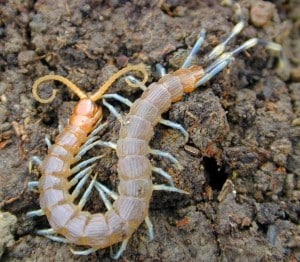Crickets Control in Calgary: Type of Crickets
There four types of crickets most common: House Crickets, Camel Crickets, Field Crickets and Mole Crickets.
Crickets can be extremely annoying, but unless there are large numbers, they do little damage.
House Crickets
House Crickets live outdoors but may come inside in considerable numbers. Adults have three dark bands on the head, 3/4-1 inch long and are light yellowish-brown.
They will eat almost anything, will chew on or damage silk and woolens. House crickets are nocturnal, staying hidden during the day. They have a distinctive chirping sound. They can be found in warm places like kitchens, basements, fireplaces, also in cracks and crevices and behind baseboard.
House crickets will attack paper, damage silk, woolens, fruits, and vegetables all kinds of foods, and even rubber. However, unless large numbers occur, such damage is usually minor.
Crickets are rather closely related to cockroaches. Both crickets and roaches have a gradual metamorphosis. The young nymphs resemble adults, but the wings are not fully developed.
Field Crickets
Field crickets are widely distributed over the United States. This cricket is slightly longer than the House Cricket and is dark brown to Grey or black. Field crickets are seen in flower beds, overgrown grass and lawns. As an over-wintering insect, they lay eggs in the soil. Their eggs hatch in late spring and develop to adults by late summer.The life of a Field cricket is about ninety days.
Field crickets prefer to live outside, feeding on plants, but will come inside if food sources dry up or there or unfavorable extremes in temperatures.
Since Field crickets are attracted to lights at night, further control can be obtained by turning off these lights. Sealing off crack and crevices to keep them from entering homes and structures should be done as much as possible.
Camel Crickets
Camel crickets are also known as hump-back crickets due to its’ hump-back appearance. Camel crickets are light to dark brown, about 1/2 -1 1/2 inch long.
These insects are not true crickets since they do not have wings.
Their diet is almost anything but camel crickets will feed on clothes. Camel Crickets are most often are found in crawl spaces and basements, but also like any cool and damp area like under logs or stones. Treat camel crickets as you would house crickets, but pay particular attention to crawl spaces and basements.
Camel crickets are light to dark brown, about 1/2 – 1 1/2 inch long. Their diet is almost anything but will feed on clothes. Camel crickets are most often are found in crawl spaces and basements, but also like any cool and damp area like under logs or stones. Treat as you would the House Cricket, but pay particular attention to crawl spaces and basements.
.
Mole Crickets
Adult mole crickets are rounded, winged and 1 to 1.25 inches long. Mole crickets are seldom seen, because, like moles, they stay underground most of the time.
Mole Crickets overwinter as adults in the soil. Mole crickets fly and mate twice a year, spring and fall. At this time, you will find their exit holes of an inch or more. Mole cricket nymphs are wingless but look like small adults. The nymphs can become very numerous and cause great damage to your grass during the warm summer months. Control methods aimed at eliminating mole cricket nymphs yield the best results, simply because they easier to kill than adults. The adult Mole Crickets appear in late winter or early spring and will tunnel throught the soil surface (looks like a narrow tunnel). They are often seen on sidewalks, driveways, around swimming pools, and are attracted to lights. They lay their eggs in the soil in pockets. It is important to wait for the nymph stages in order to treat. Treating adult Mole crickets is very difficult. Treat the nymph stage instead of targeting the adult stages.
If you are not sure that you have Mole Crickets you can soak the suspected area with soapy water. Mix 1-2 oz of a liquid dishwashing soap to a couple gallons of water. Starting at the outer edge of the suspected area, begin to soak the area. If the mole crickets are present, they will begin to emerge as you flush them out . This technique is also handy for searching for Chinch Bugs.

